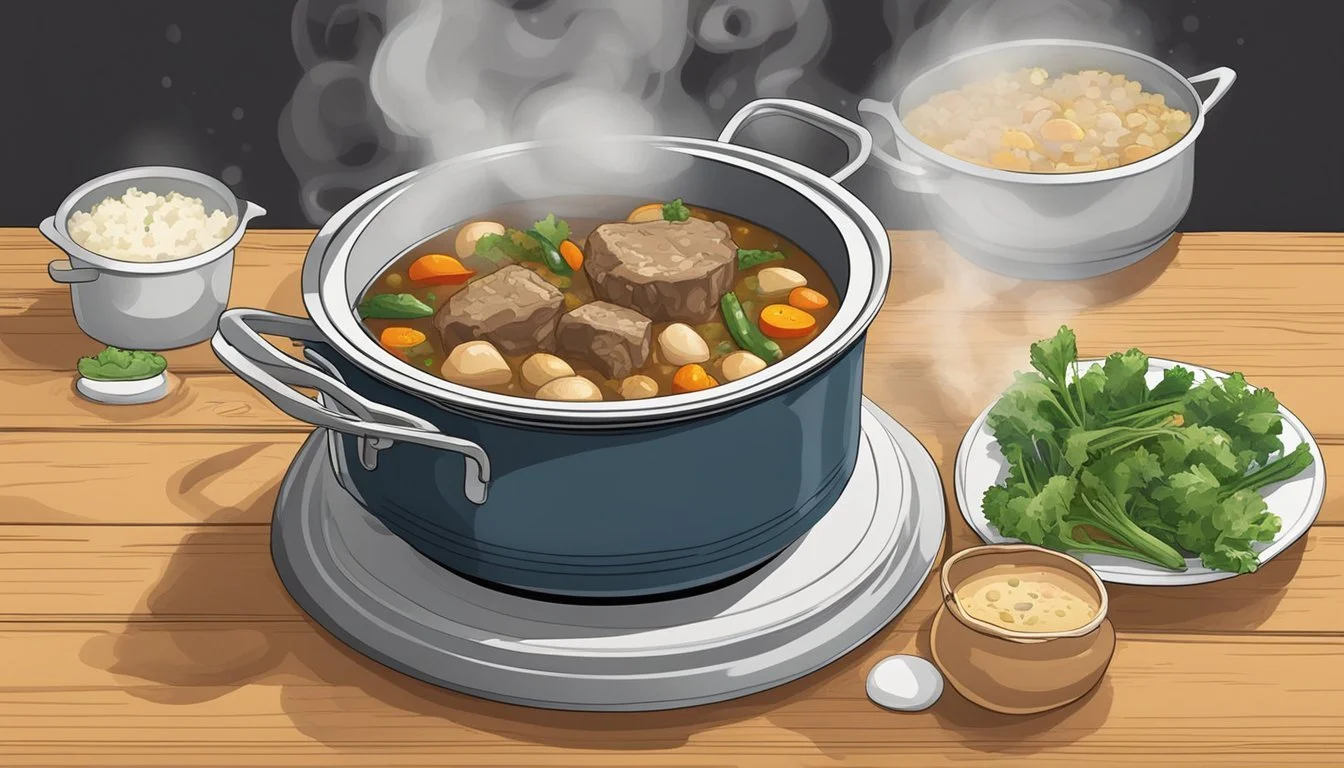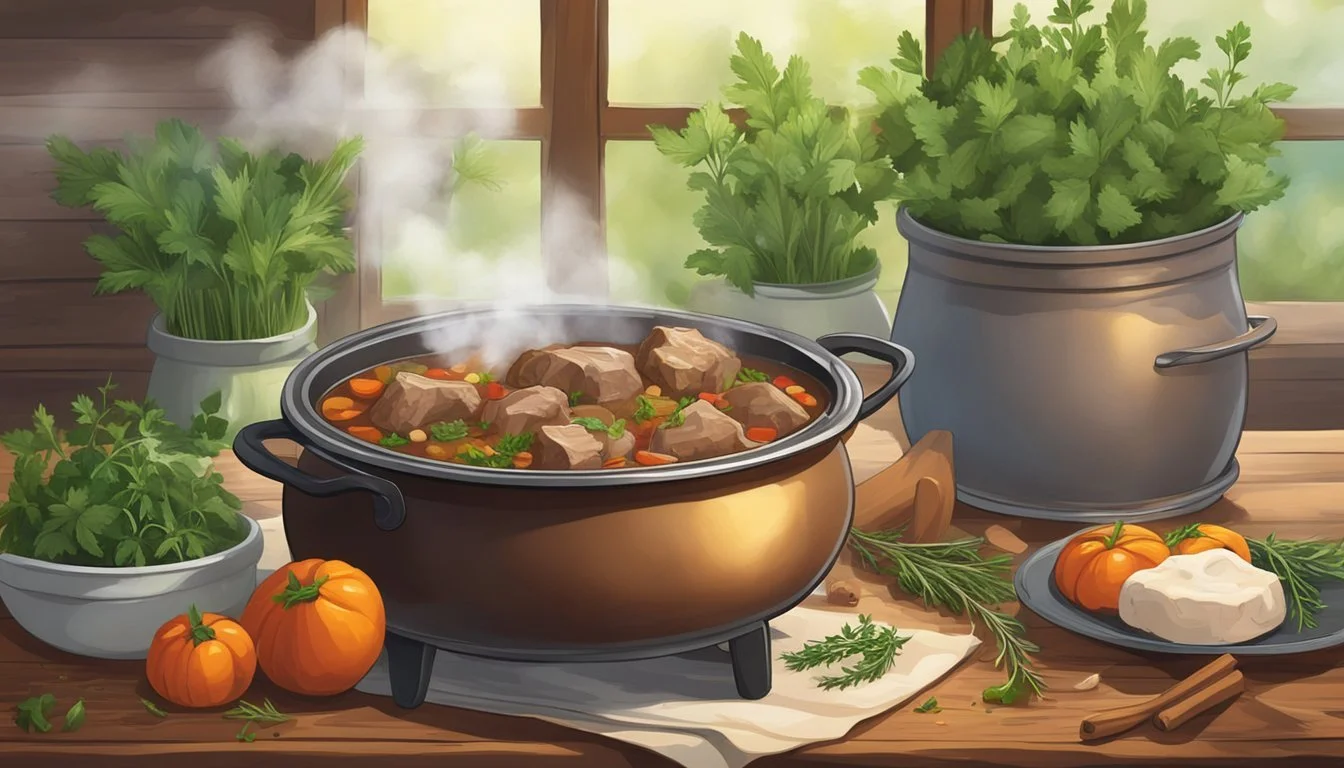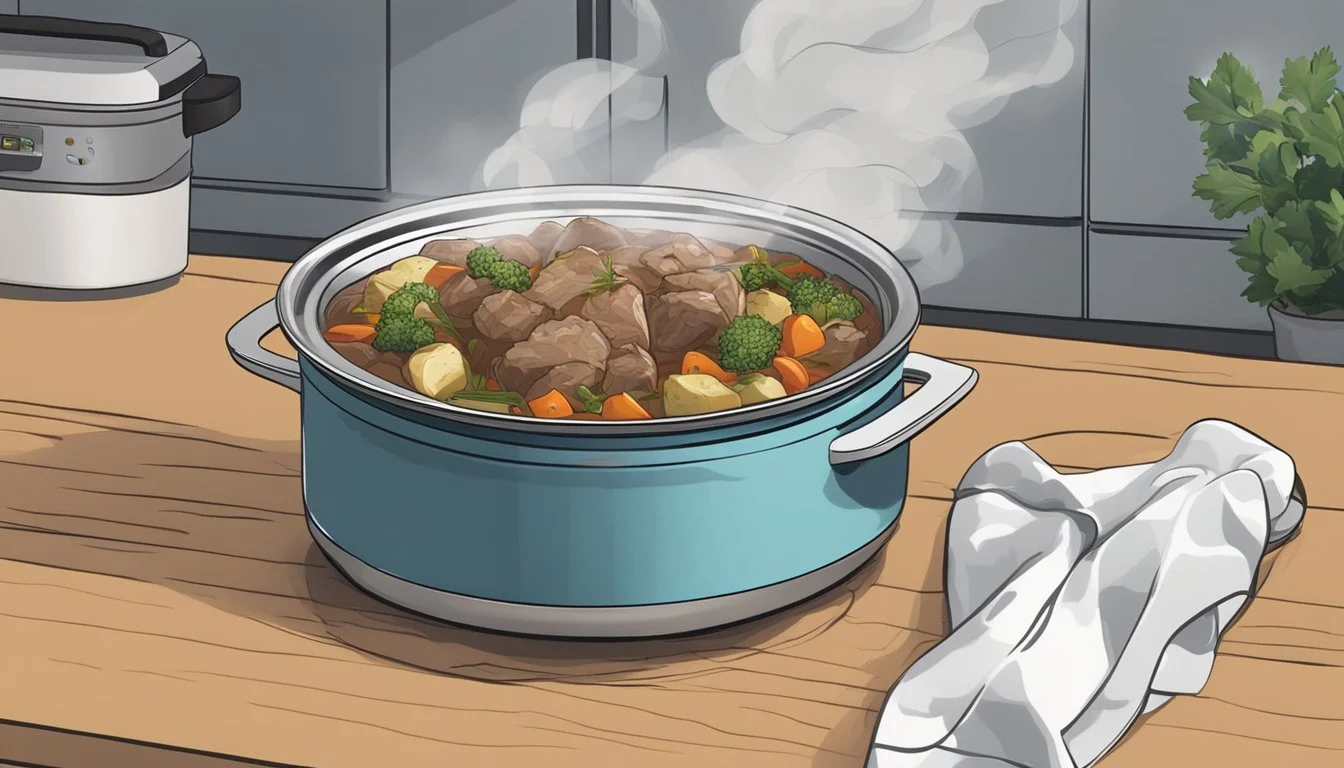Best Way to Reheat Lamb Stew
Ensuring a Hearty and Comforting Taste Every Time
Lamb stew (What wine goes well with stews?), with its rich flavors and tender meat, is a delightful meal that brings comfort and warmth to any dining experience. When it comes down to enjoying leftovers, reheating lamb stew properly is crucial for preserving its hearty taste and avoiding a dried-out or overcooked texture. This process merits attention because it ensures that every subsequent serving retains the same savory satisfaction as the first.
To ensure that the lamb stew stays moist and its flavors remain intact, one must consider the method of reheating with care. Traditional oven-based techniques are often favored for their even distribution of heat, which gently warms the stew without reducing its juiciness. Meanwhile, microwave reheating offers convenience and speed, although it requires certain steps to ensure that the lamb and vegetables don't become tough or lose their flavor. By adopting the right strategies, one can savor a revitalized dish that echoes the original's aromatic and comforting allure.
Understanding Reheating Fundamentals
Reheating lamb stew effectively revolves around managing temperature, moisture, and safety to maintain its hearty flavor and juiciness.
Importance of Temperature Control
Controlling the temperature is paramount when reheating lamb stew to preserve its flavor and texture. The stew should be reheated slowly at a low temperature, ideally around 300°F, to allow the heat to penetrate without overcooking the meat. An internal temperature of 165°F is recommended for safety and quality, which can be monitored with a meat thermometer.
Optimal Reheating Temperature: 300°F
Target Internal Temperature: 165°F
Maintaining Moisture and Flavor
Lamb stew's essence lies in its moisture and flavor. To prevent the dish from drying out, one can add a small amount of water or stock before reheating. Covering the stew with an airtight container or aluminum foil helps to lock in these elements, ensuring that the taste remains close to the original preparation.
Helpful Tips:
Add a bit of water or stock to the stew.
Cover the dish during reheating to seal in moisture.
Preventing Bacterial Growth
Ensuring that leftover lamb stew is stored and reheated properly is crucial to prevent bacterial growth. Leftovers should be stored in an airtight container and refrigerated, and reheating should be done until reaching a safe internal temperature. Using a meat thermometer will ensure that the entire dish has been adequately heated through to eliminate harmful bacteria.
Safe Storage: Airtight container in the refrigerator.
Reheating Requirement: Reach an internal temperature of 165°F.
Preparing Lamb for Reheating
When it comes to reheating leftover lamb stew, proper preparation is crucial for preserving its texture and flavor. The preparation involves thawing frozen lamb correctly, slicing meat for uniform reheating, and selecting the right container to maintain moisture and taste.
Thawing Frozen Lamb
One should thaw frozen lamb stew in the refrigerator overnight to ensure the texture remains as consistent as possible. If a quicker method is necessary, a microwave can be used, but it should be on a defrost setting to prevent the edges from cooking while the center remains frozen.
Slicing the Meat
For leftover roast lamb, slicing the meat into thin slices before reheating can help in heating it evenly and quickly. Thin slices of lamb stew meat allow for a more uniform distribution of heat, which is especially important to avoid overcooking some parts while others remain cold.
Choosing the Right Container
Reheating should be done in a casserole dish or a microwave-safe dish. Covering the lamb with aluminum foil if using an oven, or a microwave-safe lid if using a microwave, helps in retaining moisture. For those who have vacuum-sealed their leftover lamb before freezing, they can place the sealed bag in warm water to gently bring the stew up to temperature. Use of an airtight container is recommended when storing leftover lamb to prevent freezer burn if it is to be frozen again.
Reheating Techniques for Lamb Stew
When reheating lamb stew, it's crucial to restore its warmth without compromising its rich flavors. Each method has distinct steps to ensure the stew remains hearty and comforting.
Oven Method
To reheat lamb stew in the oven, preheat it to 350°F. Transfer the stew into an oven-safe dish and add a splash of broth or water to keep it moist. Cover the dish with foil to retain the moisture and heat it for about 20-30 minutes. Check periodically to ensure it doesn't dry out.
Stovetop Method
For the stovetop method, place the stew in a skillet or saucepan and add a little broth or cooking juice to prevent it from sticking. Reheat the stew over low to medium heat, stirring occasionally, until it is thoroughly heated. This should take approximately 10 minutes.
Microwave Method
Microwave reheating is quick and convenient. Place the leftover lamb stew in a microwave-safe container, loosely cover to vent, and intersperse the reheating with stirring. Microwave on medium power in one-minute intervals, checking the temperature to avoid overheating the stew.
Sous Vide Method
Although not commonly used for stew, sous vide can be very effective. Seal leftovers in a bag suitable for a sous vide machine and place it in a water bath heated to 145°F. Leave it to gently warm through, ensuring the lamb stew's flavors are locked in and evenly heated without any risk of drying out.
Special Considerations for Different Lamb Dishes
When reheating different lamb dishes, preserving the texture and flavor is paramount. Specific techniques are recommended to ensure that reheated lamb retains its original taste and mouthfeel.
Reheat Roast Lamb
For leftover roast lamb, the oven is the most effective tool to reheat without significant moisture loss. The process should be gentle to prevent the meat from drying out. A summary of steps is:
Preheat oven to 300°F (150°C).
Allow the lamb to reach room temperature to ensure even reheating.
Place the lamb on a wire rack inside a baking tray.
Drizzle the lamb with a bit of stock or its own juices.
Cover the dish loosely with foil to retain moisture.
Reheat for 30-60 minutes, checking periodically.
One should thaw roast lamb in the refrigerator if it was frozen. This gradual thawing maintains its texture and makes for safer reheating.
Lamb Curry Variations
Lamb curry requires careful reheating to preserve complex flavors and tender meat. The best method is:
Thawing in the refrigerator if the lamb curry was frozen.
Reheating gently on the stovetop over low heat.
Stirring occasionally to prevent sticking and promote even heat distribution.
Adding a splash of water or stock if the curry appears too thick or dry.
By employing these methods, both roast lamb and lamb curry can be reheated to a state that closely resembles their freshly-made taste and texture.
Safety and Storage for Lamb Leftovers
Proper safety and storage of lamb stew leftovers is crucial to prevent foodborne illness and ensure the dish remains flavorful when reheated. Utilizing correct storage methods not only extends the life of the meal but also maintains its hearty and comforting taste for future enjoyment.
Safe Storage Practices
Immediately after serving, lamb leftovers should be placed in an airtight container to prevent exposure to air which can facilitate bacterial growth. Leftovers must be moved to the refrigerator or freezer within two hours of cooking to ensure safety. In the fridge, set the temperature below 40°F (4°C), the threshold above which bacteria can multiply rapidly.
Maximizing Leftover Lifespan
To maximize the lifespan of leftover lamb stew, divide the stew into smaller portions before storing. This allows for quicker cooling, which is essential to inhibit bacterial growth. The stew can safely be stored in the refrigerator for 3-4 days or in the freezer for 2-3 months. When freezing, label the container with the date to ensure usage within the optimal timeframe.
Refrigerator (40°F or below): 3-4 days
Freezer (0°F or below): 2-3 months
Reheating Leftovers Multiple Times
Reheating lamb stew multiple times is not recommended as it can lead to potential food safety issues and quality degradation. Each cycle of reheating can incrementally increase the risk of bacterial contamination. If necessary, only reheat the portion of stew that will be consumed and never reheat the same portion more than once.
Expert Tips for Best Results
When reheating lamb stew, the main goals are to maintain its rich flavor, succulent texture, and comforting warmth. Achieving these requires careful attention to liquid addition, heat distribution, and resting the meat before serving. Here are the practical steps one should follow to ensure that the reheated stew is as enjoyable as when it was first cooked.
Correct Liquid Addition
To retain the lamb stew's moisture and flavor, it is crucial to assess and adjust the liquid content. Before reheating, ensure that there's enough broth or gravy present to cover the lamb pieces. The following points are helpful:
Replenish the Liquid: If the stew seems dry, add a small amount of broth or stock to reintroduce moisture.
Simmer, Don't Boil: When reheating, one should aim for a gentle simmer and avoid a rolling boil to prevent the meat from toughening.
Even Heat Distribution Techniques
Even heat distribution is paramount to avoid overcooking certain parts of the stew, which could lead to a loss of texture and flavor. Consider these methods:
Stir Regularly: While the stew heats, stir it periodically to ensure even warming throughout.
Use Low and Slow Heating: Moderate temperatures allow for heat to permeate evenly, safeguarding the stew's integrity.
Thick-bottomed Pot: A pot with a thick base will distribute heat more evenly, avoiding hotspots.
Resting Meat Before Serving
Allowing the lamb stew to rest off the heat before serving enables the temperature and flavors to stabilize:
Let it Stand: After reheating, remove the stew from the heat and let it sit for a few minutes to allow the heat to distribute through the lamb.
Serve Warm: Serve the lamb stew warm, not piping hot, to appreciate its full delicious flavor.
By adhering to these steps, one can reheat lamb stew effectively, capturing its original essence and providing a delightful dining experience.




